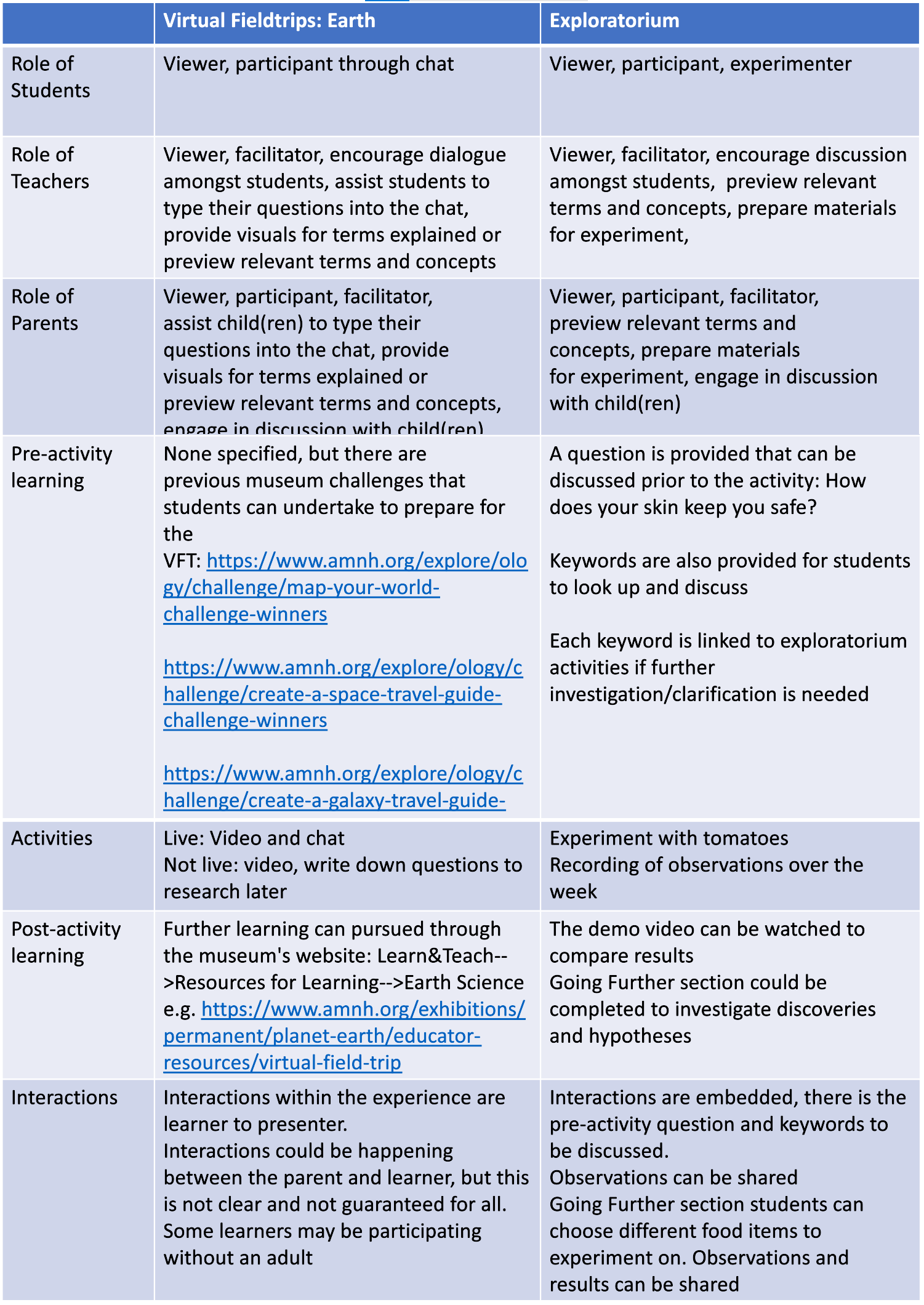- What kind of preparations do you make for in-person field trips?
- For those of you who have used VFTs, could you share your experience? What would you repeat? What adjustments (if any) would you make?
- If you used a VFT when your school was in virtual learning mode (no in-person classes), how did you engage your students in discussion? I’m especially interested in hearing from lower primary teachers because online discussions for the younger students often require assistance from an adult or parent at home.
